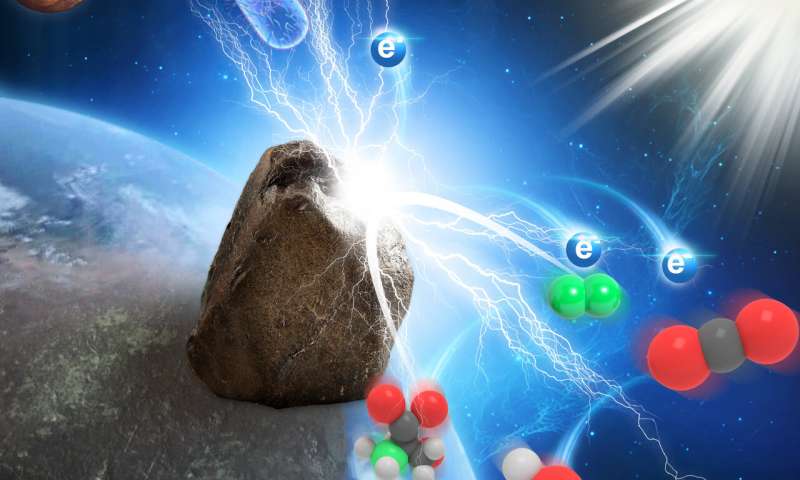Peking University researchers find naturally occurring photocurrents in inorganic mineral systems
Apr. 24, 2019
A team of researchers with members affiliated with several institutions in China, one in Canada and one in the U.S. has found evidence of naturally occurring photocurrents in inorganic mineral systems. In their paper published in Proceedings of the National Academy of Sciences, the group describes their study of naturally occurring varnishes and other rock surface coatings in different parts of China.
Photoelectric conversion on the planetary surface via widespread Fe- and Mn-mineral coatings
Most people have seen crusts that form on rocks—some are organic such as moss, others are inorganic and are typically made of minerals. In this new effort, the researchers have found evidence of photoelectric currents flowing in inorganic mineral crusts.
Photoelectric materials are materials that generate electricity when exposed to light, such as those found in solar cells. In nature, much is known about organic photoelectric systems—they form the basis of photosynthesis. But until now, little has been known about nonbiological systems that turn light into electricity. The researchers suspected that rock crusts might be such a material because so many of them contain iron and manganese, which have been used in human-made photocurrent systems. To find out if this was the case, the researchers attached sensors to samples of desert varnish and then allowed sunlight to shine on them. They did the same with similar rocks that did not have a varnish crust as a control.
The researchers report that the varnishes responded to the light by releasing electrons, resulting in a flowing current. And they did so as if they were a switch—when sunlight struck them, they released electrons, when the sunlight was blocked, they ceased releasing electrons. They report also that they saw the same results when testing karst and reddish coatings in some soil samples. They found no such activity when testing bare rock.
The research group suggests that the rock coatings behaved like photoelectric generators. They noted also that some areas on the face of the Earth have vast stretches of coated or crusted rock, all of which is presumably generating electricity. They cannot say what impact that is having but theorize that it likely plays a role in some biogeochemical processes, similar in some respects to biological photoelectric systems.
Source: Phys.org
